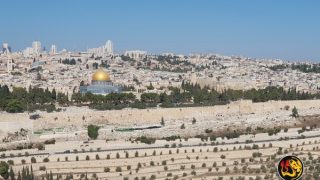Remarkable archaeology discovery in Jerusalem places Jews firmly in Jerusalem in Biblical times

by Karen Faulkner, Worthy News Correspondent
(Worthy News) – A recent, outstanding archaeological discovery of a 2,700-year-old major administrative center in Jerusalem provides further compelling evidence that Jews lived in the area during Biblical times, the Jerusalem Post reported last week. Excavated by the Israel Antiquities Authority (IAA), the site is believed to date back to the eras of Hezekiah and Manasseh, kings of Judah.
The site is in the Arnona neighborhood of Jerusalem, close to the US Embassy. According to Rosella Tercatin writing for the Jerusalem Post: “Its size, the location which dominates the valley, as well as the artifacts uncovered provided evidence that the site was not just a common private estate but an important administrative center, from a period between the eighth and the middle of the seventh century BCE.” The site was discovered while excavations were being carried for the building of a new residential complex.
During a tour of the site, IAA archaeologist Benyamin Storchan told the Jerusalem Post about the discovery of some 120 stamped seal impressions on jar handles written in ancient Hebrew: the stamped impressions translate as ‘belonging to the king.’ “These stamped jars were usually related to tax collection. Up to this day, only 1,000 similar items have been found in over a century of excavations in Israel, which gives us an idea of the importance of this area,” Storchan said.
Miniature ancient Hebrew letters are still visible on the jars, Tercatin wrote. The writing is accompanied by various symbols including a sun disk and an eagle, and is followed by the name of one of four cities in Jerusalem: Judah, Hebron, Ziph, Socho, or Memshat.”
Funded by the Israel Land Authority, the excavation is ongoing. In a press release, Dr. Yuval Baruch, the Jerusalem district archaeologist of the IAA said: “[The IAA] views archaeological excavations as a resource that must be preserved and presented to the public as part of local heritage, and not just as an academic field of study.”
